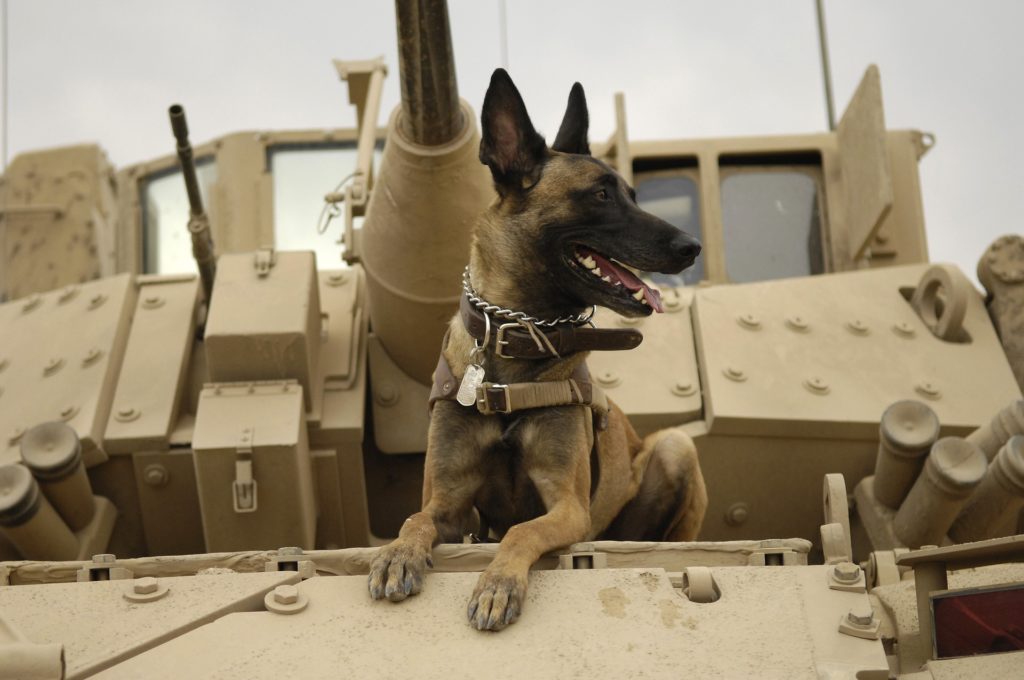
Animal Content // War Dogs: The Role of Canines in World War One*
For centuries, dogs have helped humans around the world live and work. From herding and hunting to rescue and transportation, the belief that dogs are loyal, reliable and hard-working is universal. They have played a crucial role in creating a safer, cleaner and better society, but it was during the first half of the 20th century that canines perhaps took on their greatest role to assist mankind.
Between 1914 and 1918, thousands of canines from family homes, dog pounds and police forces across the UK were recruited to help the Allies fight the central European forces in World War One. Taking on various dangerous job roles, these dogs were invaluable to the war effort.
To find out how war dogs helped the Allied forces to victory in 1918, Feedem — a leading UK supplier of grain-free dog food and pet products — has looked into the different roles war dogs played during the conflict.

War Dogs During World War One
According to records, about 20,000 dogs were trained for duties in World War One, with roles ranging from transporting messages to detecting explosive devices. These dogs turned out to be so crucial to an Allied victory that the War Office even established the War Dog School of Instruction at the start of 1917 to help properly recruit and train future war dogs.
A quote from Lt. Col. Richardson, who controlled the running of the War Dog School of Instruction, sums up how many in the military felt about war dogs. He stated in a 1918 edition of the Aberdeen Evening Express that: “The skill, courage and tenacity of these dogs has been amazing.”
Before World War One, the main animals to assist soldiers were horses, as many battles were fought by cavalries. However, World War One was unlike any major conflict in human history. Between 1914 and 1918, horses were used primarily for transportation and the role of the war dog — which covered companionship, communication, tracking, and more — grew significantly in importance.
Military dogs in World War One were positioned in roles depending on their size, breed, intelligence, and training. Here, we’ve listed the top positions war dogs played and what skills they needed to be the best at their job.
Sentry Dogs
Sentry war dogs were in charge of warning soldiers when they detected an enemy or stranger. Interestingly, a report from the Dundee Evening Telegraph in 1916 claimed that a sentry war dog, or watchdog, never barked and was instead trained to give a low growl when they sensed an intruder. Easy to train and with a territorial nature, Dobermans were popular sentry dogs and usually this role involved a guard patrolling an area with his sentry dog on a short lead.
Casualty Dogs
Casualty dogs, or mercy dogs, also played a critical role in ensuring the safety and survival of British forces during World War One. The main role of a casualty war dog was to carry medical gear and locate wounded soldiers on the battlefield, but the they were also trained to sit by a dying solder to keep him company.
This helped save countless lives, as some soldiers could treat their own injuries without having to wait for professional help that might be more desperately needed elsewhere on the field. Airedale terriers and bloodhounds were popularly used in this role, and the Airedale terrier was perhaps the most common war dog breed used by the British during the conflict overall.
Scout Dogs
Scout war dogs, similar to sentry war dogs, were employed by the British to detect danger. The difference with a scout dog was that they had to survey the terrain in front of patrolling soldiers, rather than lie in wait for a hostile encroaching presence.
Scout dogs could sniff out unfriendly scents from around 1,000 yards away, which made them invaluable to the protection of the patrol. Also unlike a sentry dog, scout dogs wouldn’t growl or bark if they sensed danger. Instead, they’d stiffen their bodies, point their tails and raise their hackles as a silent warning, so that the enemy wasn’t alerted to the approaching Allies. Alsatians and Dobermans were among the most popular dogs for sentry and scouting duties.
Messenger Dogs
Communication at this time was advancing, but still not as easy or reliable as today — even during peacetime. Consequently, another crucial war dog role was relaying key information. Human runners were easy targets for enemy forces and using vehicles always ran the risk of breaking down and churning up mud to create an even worse living and patrolling environment.
To alleviate this problem, soldiers would place notes inside tin boxes that were then tied around a dog’s neck. Quick and reliable, messenger dogs helped boost communication without the need to depend on technology. According to records, one messenger dog trained in Scotland once travelled more than 4,000 metres on the Western Front in less than an hour to deliver a message that had failed to get through via other methods of communication.
Mascot Dogs
Many of us have heard stories about animals who became companions of soldiers serving during wartime. War dogs were not only practical helpers, but they also did a lot for morale in the trenches. Essentially, the main role of a mascot dog was to improve the psychological state of soldiers at war who were missing family and home comforts.
Of course, this role could be filled by any creature — including foxes and bears — and was a popular method of comfort for many other nations during wartime. Interestingly, an American black bear named Winnie (short for Winnipeg) was a mascot to the Canadian Army Veterinary Corps before she was donated to London Zoo. The tame and playful Winnie not only encouraged Canadian forces, but also went on to inspire children’s author, A. A. Milne, whose son was enchanted by the gentle bear.
Explosive Dogs
During World War One, a range of dog breeds was used to help fight enemy forces including lurchers, retrievers, border collies, and English sheepdogs. Detecting undetonated explosives was a critical role in the British Army and a war dog’s keen sense of smell and loyalty made them fantastic for the job. Detector war dogs helped locate bombs before soldiers moved too closely to the danger, which saved many lives and vital medical equipment.
Ratter Dogs
World War One was the war of the trenches. Bleak, desperate and rife with pests, these were often about 12 feet deep and provided very poor, unsanitary living conditions for fighting men. To help, many war dogs were employed as pest controllers and sent on rat-hunts up and down the trenches. Terriers were the most popular ratter war dogs and many also took on the role of comforting mascots. The ratter dog was essential to maintaining as clean and disease-free habitat as possible. Without these war dogs, living conditions would have been even worse and many more soldiers would have suffered debilitating or fatal illnesses before even setting foot on the battlefield.
War dogs during World War One went above and beyond the call of duty. Without these loyal and dependable animals, victory for the Allied forces is likely to have been far more difficult.




